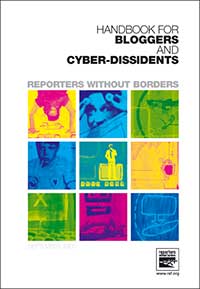“Reporters sans frontières” ask to click their site between Nov 7, 11:00 Uhr until Nov 8, 11:00 Uhr.
2005 was the deadliest year for journalists since 1995: 63 journalists and 5 media assistants were killed doing their job or for having expressed their opinion; more than 1, 300 physical assaults were recorded and more than 1, 000 media were censored, an increase of 60% compared to 2004.
You may want to look also at the nice brochure at their website:

